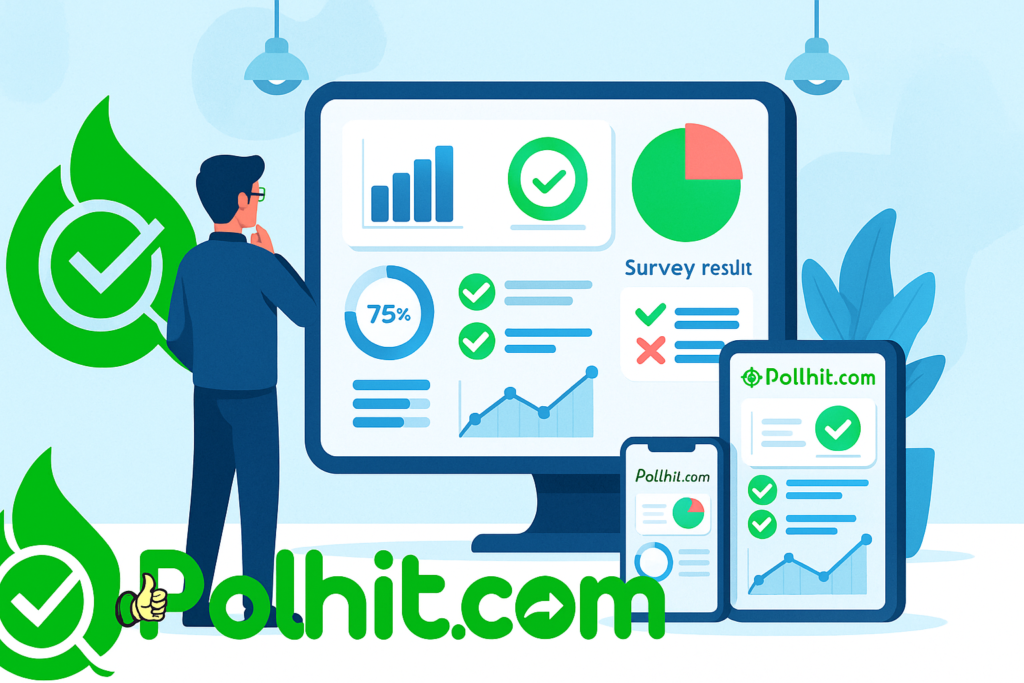Introduction
In 2025, the ability to turn feedback into meaningful action is a superpower for businesses, educators, and organizations alike. The secret weapon? Survey analysis. With more advanced tools and smarter analytics, survey analysis has evolved into a key strategy for driving decisions and innovation. In this guide, we’ll explore the tools, techniques, and best practices that will help you make the most of every response.
Why Survey Analysis Matters in 2025

Improved Decision-Making
Survey analysis enables organizations to make data-driven decisions, avoiding guesswork and focusing on real user sentiments. In 2025, with tools like PollHit’s real-time analytics dashboard (explore tools), this process has become more intuitive and efficient.
Personalization and Customer Retention
Detailed analysis helps tailor products, services, and marketing strategies based on genuine user feedback. With AI-driven personalization engines now common, understanding customer sentiment at a granular level is more critical than ever.
Tools for Survey Analysis in 2025
1. PollHit Analytics Dashboard
The built-in analytics system at PollHit offers dynamic graphs, heat maps, response filtering, and demographic breakdowns. It’s ideal for businesses that want a plug-and-play tool without complex setup.
2. Google Data Studio + Google Forms
If you’re collecting data via Google Forms, Google Data Studio remains a great free visualization tool for building custom dashboards. Learn more.
3. Microsoft Power BI
Perfect for large organizations with more complex data needs. It integrates smoothly with survey platforms and CRM tools for multi-layered insights.
4. Tableau
Tableau continues to dominate the enterprise space with powerful visual storytelling features. It’s excellent for comparing trends and customer behaviors over time.

Techniques for Effective Survey Analysis
1. Clean and Prepare Your Data
Start by removing incomplete or duplicate responses. Tag open-ended feedback using sentiment analysis, a feature now integrated in tools like PollHit.
2. Cross-Tabulation
This technique lets you compare responses across demographics. For example, analyzing how satisfaction levels differ between new and repeat customers can reveal valuable trends.
3. Statistical Testing
Use chi-square or t-tests to determine if differences in survey results are statistically significant. This is essential when making high-stakes decisions.
4. Segment Your Audience
Break down results by age, gender, location, or purchase history. PollHit’s platform supports auto-segmentation to make this easier (see PollHit features).
5. Visualize Key Metrics
Present your findings using bar graphs, pie charts, and trend lines. PollHit’s dashboard lets you export visual reports for presentations or sharing with teams.
Metrics to Track During Survey Analysis
1. Net Promoter Score (NPS)
This metric reveals customer loyalty and likelihood to recommend your product or service.
2. Customer Satisfaction Score (CSAT)
A quick pulse on overall satisfaction, usually captured with a single question.
3. Customer Effort Score (CES)
Used to assess how easy or difficult a process is for users, such as navigating your website or reaching support.
4. Completion Rate
Indicates the percentage of people who finished your survey, helping evaluate question structure and engagement.
5. Open-Ended Sentiment
Use AI tools to tag emotions and themes in written responses.

Best Practices for Turning Feedback into Action
1. Prioritize Actionable Feedback
Focus on responses that indicate specific problems or suggestions. Rank them by frequency and urgency.
2. Share Insights with Stakeholders
Create concise reports and visual dashboards. PollHit allows export to CSV or PDF for executive summaries.
3. Close the Feedback Loop
Let respondents know their feedback led to real changes. This not only boosts engagement but also improves brand trust.
4. Test and Iterate
Use survey results to make small changes and re-survey after implementation. This iterative approach leads to consistent improvement.
How PollHit Streamlines Survey Analysis
PollHit’s survey builder includes pre-configured templates, branching logic, and analytics tools that turn raw data into clear, visualized trends. Whether you’re running customer satisfaction surveys, product feedback polls, or employee pulse checks, PollHit ensures no insight gets lost.

Outbound Resources to Explore
- Harvard Business Review on Using Customer Feedback Strategically
- SurveyMonkey’s Guide to Survey Data Analysis
- Qualtrics: Customer Experience Metrics Explained
Conclusion
Survey analysis in 2025 goes far beyond charts and percentages. With advanced tools, smarter segmentation, and AI-driven insights, it’s easier than ever to listen to your audience—and act on what they say.
Ready to start? Use PollHit to build smarter surveys and unlock deeper insights from your audience today.
Need help crafting your first survey? Try a ready-to-use template now.
